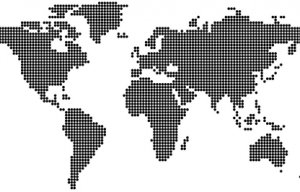
Textiles associations welcome EU-Mercosur FTA negotiations
Technical textiles continued to represent a very large share of textile product exports outside the EU.

30th June 2016
Innovation in Textiles
|
Brussels
Technical textiles continued to represent a very large share of textile product exports outside the EU. This change was reflected in a 5.3% increase. The USA was the main customer in this category by a broad margin – buying 19% of goods, an increment of 13.4%.
EU-28 menswear exports still accounted for 23% of total exports in the clothing sector thanks to a 3.8% growth in value terms. Mirroring the situation of menswear, womenswear exports outside the EU-28 increased by 6.3%. This sector accounted for more than 40% of all clothing exports outside the EU.
Exports of man-made fibres outside of the EU have regained their rate of growth these past years and rose by 4.5% in value during 2015.
There were some changes in the ranking of the EU-28’s main customers, although the USA remained the EU leading customer. Despite the downward trend in the production volume of thread and yarn, in 2015, the volume of exports outside the EU was unchanged. The value increment noticed (+4.8%) stemmed above all from the price of the raw material imports, which became more expensive with a weak euro.
Woven fabrics’ exports went down for the first time in several years by 0.4%. Regarding the main buyers of European fabrics, Morocco held onto the top place with an increase of 2.1% in value, thanks to its purchasing of discontinuous synthetic fibre fabrics (+13.6%).
The year 2015 was a somewhat difficult year for the knitted fabrics, representing 5.7% of EU-28 textile exports. These exports remained almost stable in value terms. Morocco and Tunisia were still the main buyers of these articles even if trends were different.
Exports of carpets recovered in value by 2.6%, with slightly higher unit prices, which grew by 2.1%. This sector accounted for a little over 4% of textile exports. Customer-wise, the USA and Switzerland were the main buyers.
In 2015, exports outside the EU of home textiles recorded growth of 4.7% on average. Of all the products in this category, the main one – bed linen (with a share of 38%) – saw its exports climb by 9.2%. Switzerland and the USA were still the two major buyers of home textiles.
The 2015 evolution of imports indicates a growth in all products of the value chain, with the largest increase in technical textiles and womenswear, the organisation reports.
With production of textile products in the EU-28 on a downward trend, foreign demand for man-made fibres edged up slightly by 6.3% in value terms. With a 28% market share in terms of volume, South Korea was still the main supplier. Owing to the continued shrinkage of activity in the downstream, the volume of imports of yarn and thread from outside the EU slightly increased by 2.4%, they also felt the backlash of the euro’s fall.
As was the case for all other imported textiles, the euro’s decline brought about an 8.1% increase in the value of imports of all types of woven fabrics. Imports of cotton fabrics represented the lion’s share in value (31%) and rose by 2.4%.

Business intelligence for the fibre, textiles and apparel industries: technologies, innovations, markets, investments, trade policy, sourcing, strategy...
Find out more